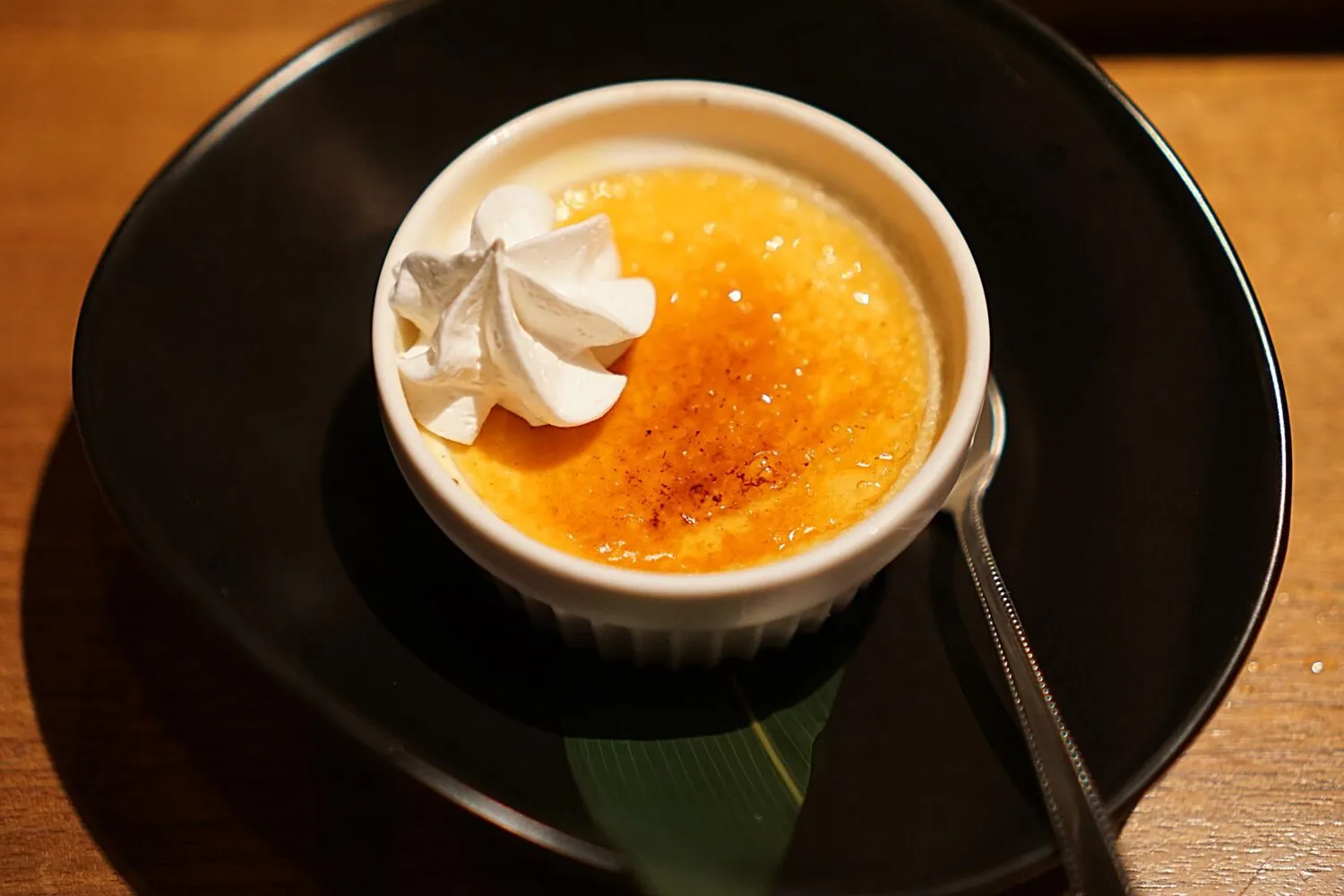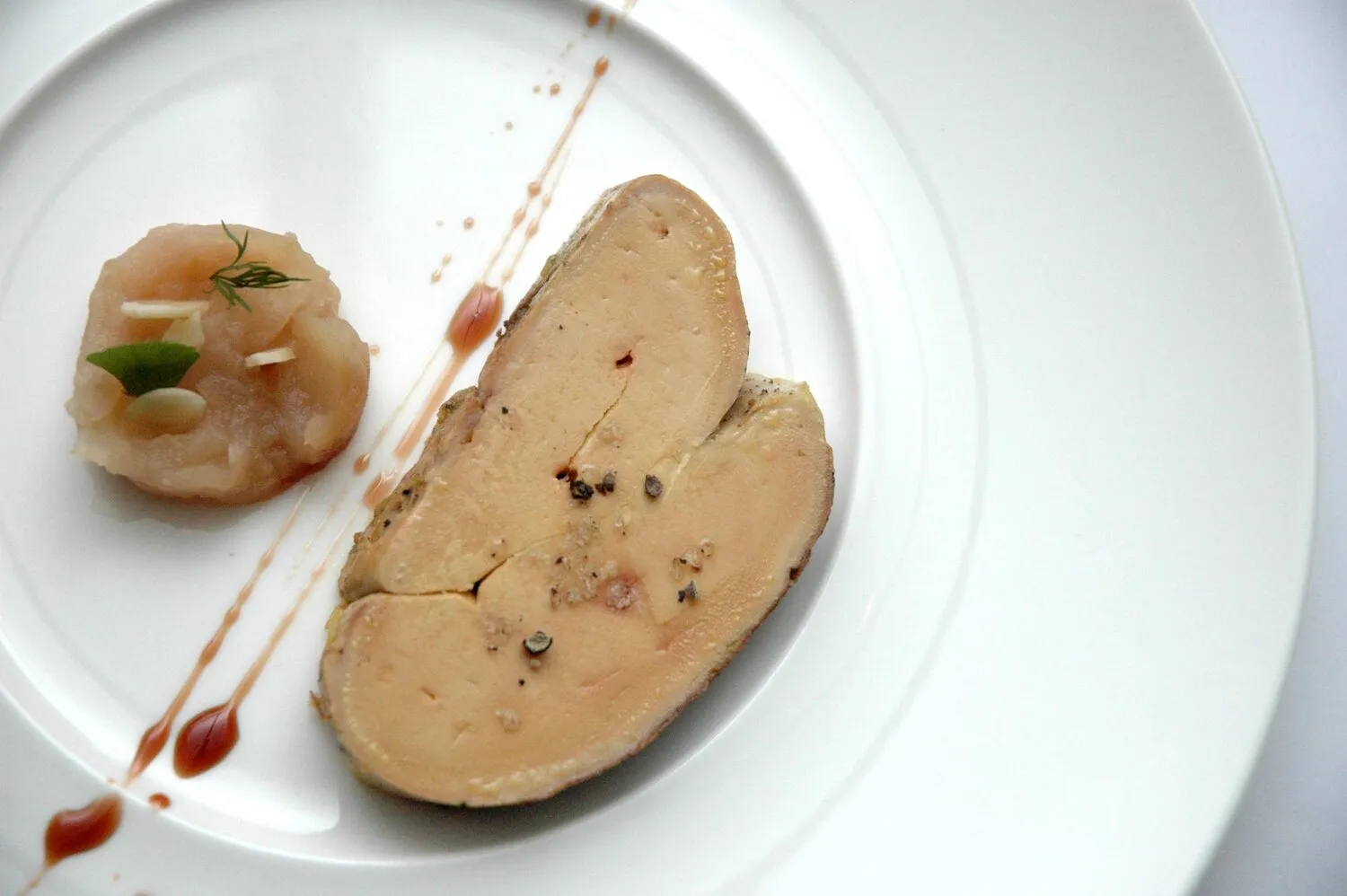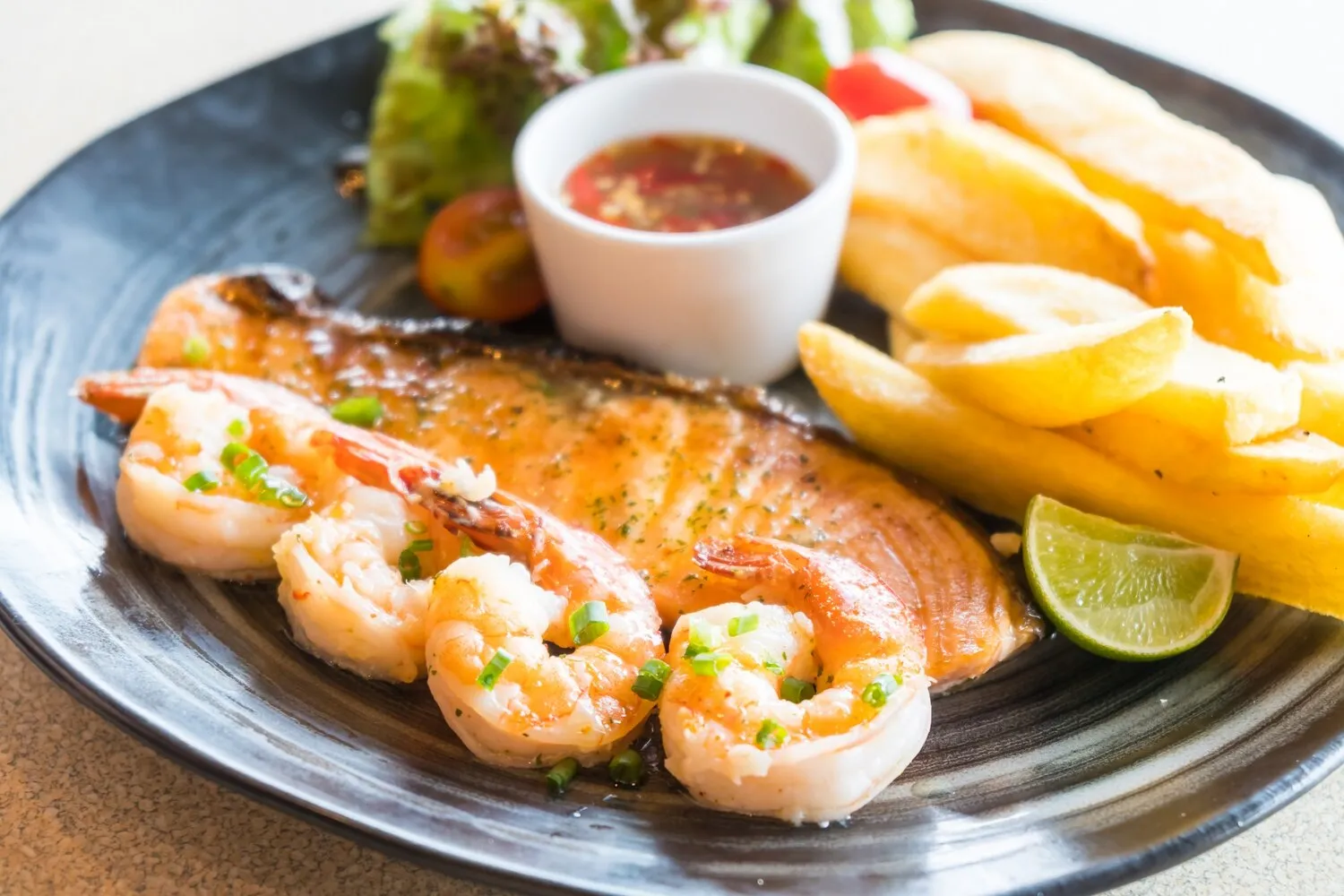
Crème brûlée
A popular dessert option, according to customer reviews.
Nutrition Facts
* The % Daily Value (DV) tells you how much a nutrient in a serving of food contributes to a daily diet. 2,000 calories a day is used for general nutrition advice.
The exact origins of crème brûlée are debated, with similar custard desserts appearing in English and Spanish cuisine around the same time. The first known printed recipe for crème brûlée, however, appears in François Massialot's 1691 cookbook 'Le Cuisinier Royal et Bourgeois'. It gained significant popularity in the late 20th century, becoming a staple dessert in restaurants.
Crème brûlée is often seen as a sophisticated and elegant dessert, frequently enjoyed in fine dining settings or special occasions.
Restaurant Staple
Crème brûlée is a common offering on dessert menus in restaurants worldwide, particularly those featuring French cuisine.
Special Occasions
It is often served at celebratory meals or as a treat for special occasions due to its elegant presentation and rich flavor.
Culinary Challenge
Crème brûlée is also viewed as a test of skill for pastry chefs, as the texture of the custard and the caramelization of the sugar require precision and attention to detail.
Crème brûlée offers a delightful contrast between the cool, creamy custard and the brittle, caramelized sugar topping.
The custard base is typically vanilla-flavored, created with heavy cream, egg yolks, sugar, and vanilla extract or bean. The flavor is rich, smooth, and subtly sweet, often with a strong vanilla aroma. The caramelized sugar topping, achieved by torching granulated sugar, adds a hard, crackling texture and a deep, burnt-sugar flavor that complements the creamy custard. Variations can include infusing the custard with different flavors like coffee, chocolate, citrus zest, or liqueurs.
Water Bath Importance
Baking the custard in a water bath (bain-marie) is crucial for even cooking and preventing the custard from curdling. The water helps to regulate the temperature and ensures a smooth, creamy texture.
Vanilla Bean Infusion
For the most intense vanilla flavor, use a vanilla bean instead of vanilla extract. Scrape the seeds into the cream and simmer the pod in the cream as well before removing it.
Sugar Caramelization
Use a kitchen torch to evenly caramelize the sugar. Move the flame continuously and avoid holding it in one spot for too long, as this can burn the sugar and create a bitter taste. Alternatively, place under a broiler briefly, but watch closely to avoid burning.
Chill Time
Ensure the custard is thoroughly chilled before caramelizing the sugar. This helps the topping to harden quickly and prevents the custard from melting.
Explore additional Classic French dishes and restaurants
Explore Classic FrenchDiscover top dining spots and culinary experiences in Poitiers.
Explore PoitiersLearn more about the food culture, restaurant scene, and culinary heritage of France.
Explore France

